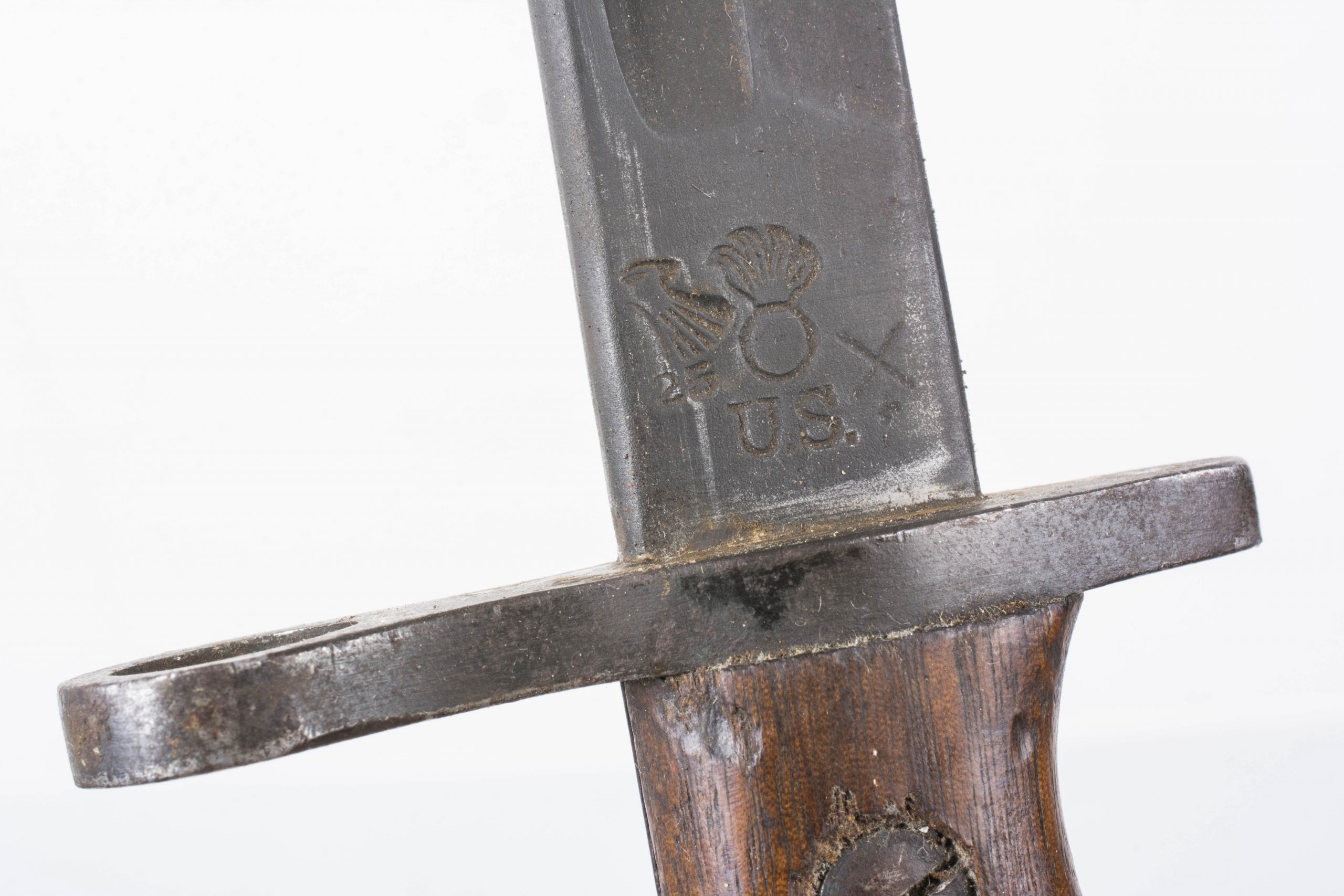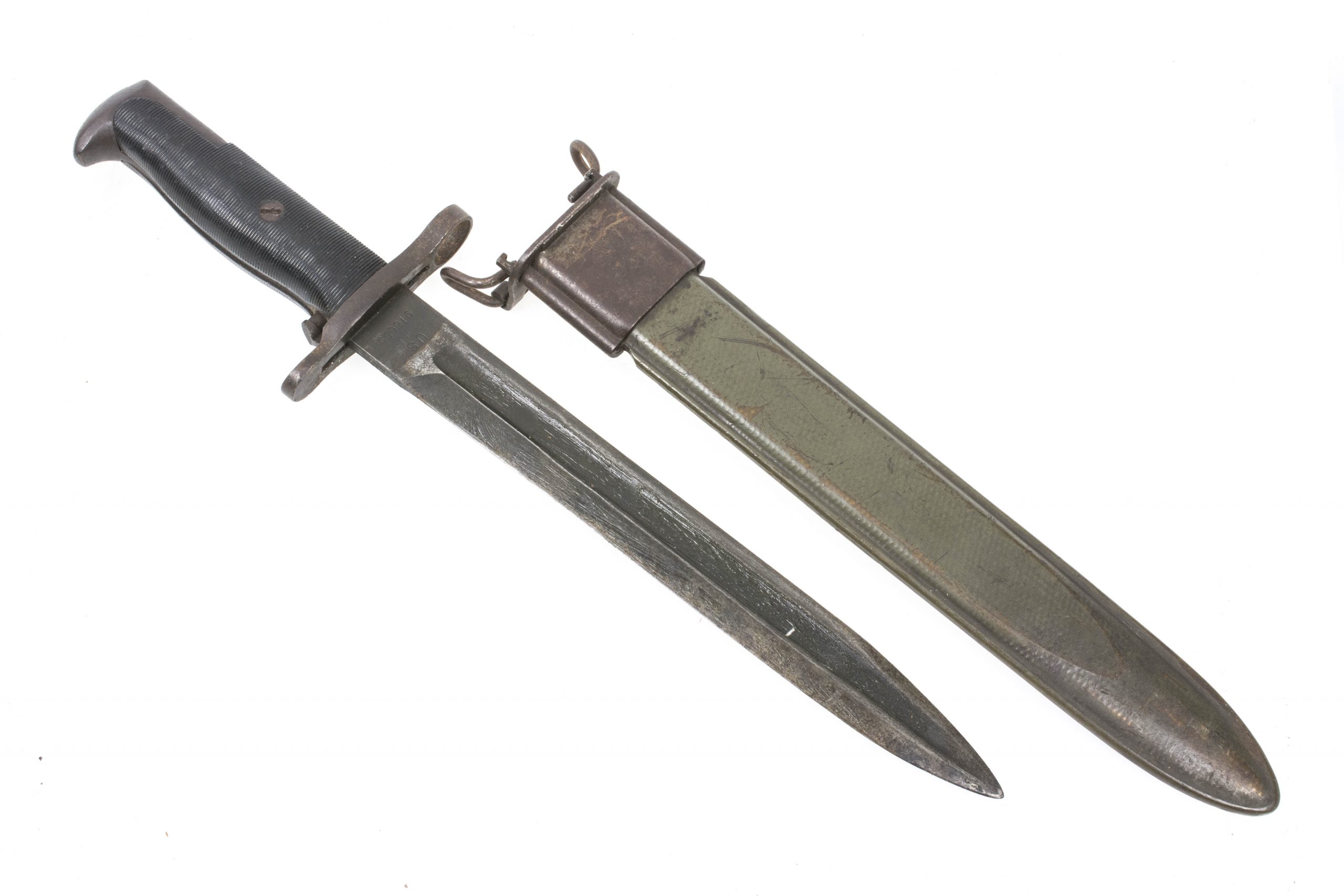The M1917 Bayonet: A Legacy Of American Warfare
Editors Note: "The M1917 Bayonet: A Legacy Of American Warfare" have published today by our team member who is experienced with bayonet and firearms. The M1917 Bayonet: A Legacy Of American Warfare is one of the most iconic bayonets in American history. It was used by American troops in World Wars I and II, and it remains in service today as a ceremonial bayonet.
Our team have dug pain to gather information and put together this guide to help you understand the history, design, and legacy of the M1917 bayonet.
Key Differences and Key Takeaways
Transition to main article topics
FAQ
Pertaining to "The M1917 Bayonet: A Legacy of American Warfare," the following frequently asked questions provide detailed and comprehensive answers to common inquiries.

US M1917 bayonet – fjm44 - Source fjm44.com
Question 1: When and where was the M1917 Bayonet initially produced?
The M1917 Bayonet, as designated by the U.S. military, was first produced in 1917 in response to the American entry into World War I. Initial production took place in the United States, primarily at factories in Connecticut and New Jersey.
Question 2: What are the distinctive features of the M1917 Bayonet?
The M1917 Bayonet is distinguished by its 16-inch blade, which features a 10-inch single-edged blade with a 6-inch double-edged clip point. The blade is affixed to a brass handle with a wooden grip, and the bayonet includes a leather scabbard for protection and carrying.
Question 3: What was the primary intended use of the M1917 Bayonet?
The M1917 Bayonet was designed primarily for close-quarters combat, intended to be fixed to the M1903 Springfield rifle. However, it also saw widespread use as a fighting knife and trench tool.
Question 4: How many M1917 Bayonets were produced during World War I?
During World War I, the United States produced approximately 2.3 million M1917 Bayonets. These were supplied to American troops both at home and abroad.
Question 5: Was the M1917 Bayonet used in conflicts after World War I?
Yes, the M1917 Bayonet continued to be used by American forces in subsequent conflicts, including World War II and the Korean War. It was not officially replaced until the adoption of the M4 Bayonet in 1954.
Question 6: What is the legacy of the M1917 Bayonet today?
The M1917 Bayonet remains an iconic symbol of American military history. It is highly sought after by collectors and history enthusiasts, and its design has influenced the development of modern bayonets.
In conclusion, the M1917 Bayonet stands as a testament to American ingenuity and the enduring legacy of close-quarters combat. Its distinctive features and widespread use make it a pivotal weapon in the annals of American military history.
Proceed to the following section for further exploration of the M1917 Bayonet and its impact on American warfare.
Tips
The M1917 bayonet has seen extensive use in American military conflicts since its introduction in 1917. As a result, it has gained a reputation for being a reliable and effective close-quarters combat weapon. If you are interested in learning more about the M1917 bayonet, the following tips may be helpful.
Tip 1: Familiarize yourself with the different models of the M1917 bayonet. There are several different models of the M1917 bayonet that have been produced over the years. Each model has its own unique characteristics and features. By familiarizing yourself with the different models, you can better understand the history and evolution of the M1917 bayonet as well as The M1917 Bayonet: A Legacy Of American Warfare.
Tip 2: Learn how to properly care for and maintain your M1917 bayonet. The M1917 bayonet is a precision instrument that requires proper care and maintenance to ensure that it functions properly. By learning how to properly care for and maintain your M1917 bayonet, you can extend its lifespan and ensure that it is always ready for use.
Tip 3: Practice using the M1917 bayonet in a variety of scenarios. The best way to learn how to use the M1917 bayonet effectively is to practice using it in a variety of scenarios. This will help you develop the skills and confidence needed to use the M1917 bayonet in real-world situations.
Tip 4: Consider purchasing a M1917 bayonet training knife. A M1917 bayonet training knife is a great way to practice using the M1917 bayonet without the risk of injury. Training knives are made of a soft material, such as rubber or plastic, that will not cause serious injury if you accidentally cut yourself.
Tip 5: Respect the M1917 bayonet as a historical artifact. The M1917 bayonet is a piece of American history that has been used in some of the most important conflicts in our nation's past. By respecting the M1917 bayonet as a historical artifact, you can help to preserve its legacy for future generations.
Summary
The M1917 bayonet is a versatile and effective close-quarters combat weapon that has been used by the United States military for over a century. By following the tips outlined in this article, you can learn more about the M1917 bayonet, care for it properly, and use it effectively in a variety of scenarios.
The M1917 Bayonet: A Legacy Of American Warfare
The M1917 bayonet stands as a potent symbol of American military prowess, embodying the nation's martial spirit and technological ingenuity. Its design, deployment, and enduring legacy have shaped the course of American warfare, leaving an indelible mark on both domestic and international conflicts.
- Versatility: Bayonet lug adaptable for various rifles
- Effectiveness: Double-edged blade and sharp point
- Adaptability: Utilized in diverse combat situations
- Production: Mass-produced during WWI, arming American troops
- Legacy: Symbol of American military heritage
- Cultural Impact: Depictions in art, literature, and popular culture
The M1917 bayonet's versatility was a key factor in its widespread adoption. Its ability to be attached to a variety of rifles, including the Springfield M1903 and the M1 Garand, made it a valuable asset in the hands of American soldiers. The bayonet's double-edged blade and sharp point proved highly effective in close-quarters combat, delivering devastating blows to the enemy. Moreover, the bayonet's adaptability extended beyond its primary function as a close-combat weapon. It could also be used as a wire cutter, a tool for digging trenches, and even as a makeshift cooking utensil.
The M1917 Bayonet: A Legacy Of American Warfare
The M1917 bayonet is a significant component of American warfare history. After its introduction in World War I, it became the standard bayonet for the U.S. military, serving in various conflicts, including World War II, the Korean War, and the Vietnam War. The M1917 bayonet's design and effectiveness made it a formidable weapon, showcasing American ingenuity and manufacturing prowess. Understanding its legacy is crucial as it sheds light on the evolution of infantry combat tactics, the importance of close-quarters combat, and the impact of technological advancements on warfare.

US M1 Garand bayonet marked SA 1918 – fjm44 - Source fjm44.com
The M1917 bayonet's effectiveness stemmed from its sturdy construction, featuring a 10-inch blade and a reinforced socket that securely attached it to the rifle. Its blade's geometry allowed for both thrusting and slashing attacks, making it versatile in close-quarters combat. Furthermore, the bayonet's relatively long reach provided an advantage in trench warfare, where close-range engagements were common. Its design also facilitated the attachment of wire cutters, enhancing its utility on the battlefield.
The M1917 bayonet played a pivotal role in American victories during World War I. It was instrumental in the Meuse-Argonne Offensive, where American troops faced fierce German resistance. The bayonet's effectiveness in close-quarters combat proved invaluable in clearing enemy trenches and fortifications. Similarly, during World War II, the M1917 bayonet saw extensive use in the Pacific Theater, where it was particularly effective in jungle warfare. Its ability to inflict significant damage in close-range encounters was crucial in the dense vegetation and limited visibility conditions.
As warfare evolved, the M1917 bayonet gradually transitioned to a secondary role with the advent of more advanced weaponry. However, it remained a vital tool for certain combat scenarios, such as urban warfare and special operations. Its compact size and versatility made it suitable for close-quarters combat in confined spaces. The M1917 bayonet continues to be part of the U.S. military inventory, albeit in limited numbers, serving as a testament to its enduring legacy and adaptability.
The M1917 bayonet's significance extends beyond its combat effectiveness. It represents the ingenuity and manufacturing capabilities of the United States during the early 20th century. The bayonet's design and production reflected the nation's industrial prowess and its ability to equip its military with high-quality weapons. Moreover, the M1917 bayonet's legacy is intertwined with the experiences of American soldiers who carried it into battle. It symbolizes their courage, resilience, and the sacrifices they made in defense of their country.
In conclusion, the M1917 bayonet stands as a testament to American military history, innovation, and the enduring spirit of its soldiers. Its legacy as a formidable weapon and symbol of close-quarters combat continues to inspire and inform modern-day military strategies and tactics. Preserving and understanding the M1917 bayonet's history contributes to a deeper appreciation of American warfare and the sacrifices made by those who have served.
| Attribute | Significance |
|---|---|
| Versatility and Effectiveness | Thrusting and slashing attacks, wire-cutting capability |
| Historical Impact | Instrumental in major battles of World War I and World War II |
| Symbolism and Heritage | Represents American manufacturing prowess and soldier's courage |
| Adaptability and Practicality | Continued use in close-quarters combat and special operations |
| Lessons Learned and Future Considerations | Informs modern military tactics and close-quarters combat strategies |